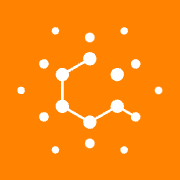# Mathematical Beauty, Truth and Proof in the Age of AI

## Metadata
- Author: [[Jordana Cepelewicz]]
- Full Title: Mathematical Beauty, Truth and Proof in the Age of AI
- Category: #articles
- Summary: Mathematicians have started to prepare for a profound shift in what it means to do math. The post Mathematical Beauty, Truth and Proof in the Age of AI first appeared on Quanta Magazine
- URL: https://www.quantamagazine.org/mathematical-beauty-truth-and-proof-in-the-age-of-ai-20250430/
## Highlights
- The best proofs are works of art. They’re not just rigorous; they’re elegant, creative and beautiful. This makes them feel like a distinctly human activity — our way of making sense of the world, of sharpening our minds, of testing the limits of thought itself. ([View Highlight](https://read.readwise.io/read/01jv2nswkpwvxgjgjx1g2zw5rw))
- when researchers started developing artificial intelligence in the mid-1950s, they hoped to automate theorem proving: to design computer programs capable of generating proofs of their own. They had some success. One of the earliest AI programs [could output proofs](https://www.cs.cornell.edu/courses/cs4860/2012fa/MacKenzie-TheAutomationOfProof.pdf) of dozens of statements in mathematical logic. Other programs followed, coming up with ways to prove statements in geometry, calculus and other areas. ([View Highlight](https://read.readwise.io/read/01jv2ntr14sbgvyxjppcdgxrwt))
- Still, these automated theorem provers were limited. The kinds of theorems that mathematicians really cared about required too much complexity and creativity. Mathematical research continued as it always had, unaffected and undeterred. ([View Highlight](https://read.readwise.io/read/01jv2ntzvsjqbm04qn4thk03sa))
- Over the past few years, mathematicians have [used machine learning models](https://www.nature.com/articles/s41586-021-04086-x) to uncover new patterns, invent new conjectures, and find counterexamples to old ones. They’ve created [powerful proof assistants](https://www.quantamagazine.org/building-the-mathematical-library-of-the-future-20201001/) both to verify whether a given proof is correct and to organize their mathematical knowledge. ([View Highlight](https://read.readwise.io/read/01jv2nvm24skx5pmpkkyyqgdz6))
- In such a future, instead of spending most of their time proving theorems, mathematicians will play the role of critic, translator, conductor, experimentalist. Mathematics might draw closer to laboratory sciences, or even to the arts and humanities. ([View Highlight](https://read.readwise.io/read/01jv2nx0mqjnaavetnpxngqmq8))
- Socrates was among the first thinkers in the West to worry about how technology could work against clear thinking. In his view, the increasingly widespread technology of writing was an unreliable vehicle for information, one that would erode people’s innate ability to remember. ([View Highlight](https://read.readwise.io/read/01jv2nxktj3w8fq02db10kap9m))
- Today, we could not do mathematics without writing. “Paper functions as an external memory, a different type of thinking system,” Venkatesh said. It has allowed people to store knowledge and pass it down; even decisions about which symbols to use to represent mathematical concepts have led to important advances. ([View Highlight](https://read.readwise.io/read/01jv2nxy8z20npd6h0pjw1zmcg))
- In the time of Socrates, and for the next 2,000 years, Western mathematics was geometry. The ancient Greeks characterized math as the science of magnitude, of things you can draw and measure and count. ([View Highlight](https://read.readwise.io/read/01jv2nyknw5vmsw7r9x58fqt7x))
- Then, in 1637, the French mathematician René Descartes published his treatise [*Discourse on the Method*](https://www.gutenberg.org/ebooks/59). In its appendix, he introduced what would later be known as Cartesian coordinates: a way to translate geometric curves and shapes into algebraic equations. Algebra became a means of outsourcing certain problems that couldn’t be solved geometrically. But it also meant moving away from a physical understanding of math. “You can slog through the algebra, but you’re working blind in a way,” said Jeremy Gray of the Open University in England. “Plugging and chugging doesn’t have the visual quality that a lot of Euclidean geometry does. It’s powerful, but not so charming.” ([View Highlight](https://read.readwise.io/read/01jv2nzkmxgk37f11avm1f8pdt))
- Some mathematicians felt that algebraic methods were taking mathematics in the wrong direction. Chief among them was Isaac Newton. These approaches, he wrote, were “so tedious and entangled as to produce nausea.” To him, geometric intuition was central to what it meant to truly understand something mathematically. By working in terms of algebraic symbols and abstractions, [he claimed](http://mitp-content-server.mit.edu:18180/books/content/sectbyfn?collid=books_pres_0&fn=9780262013178_sch_0001.pdf&id=8197), mathematicians could not possibly understand what they were doing, even if they thought they did. ([View Highlight](https://read.readwise.io/read/01jv2p078p0yjj9g26m0kr3891))